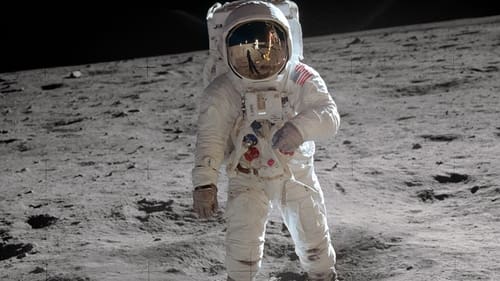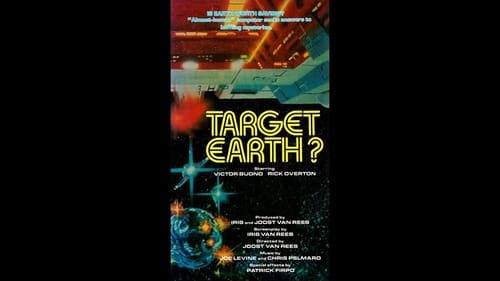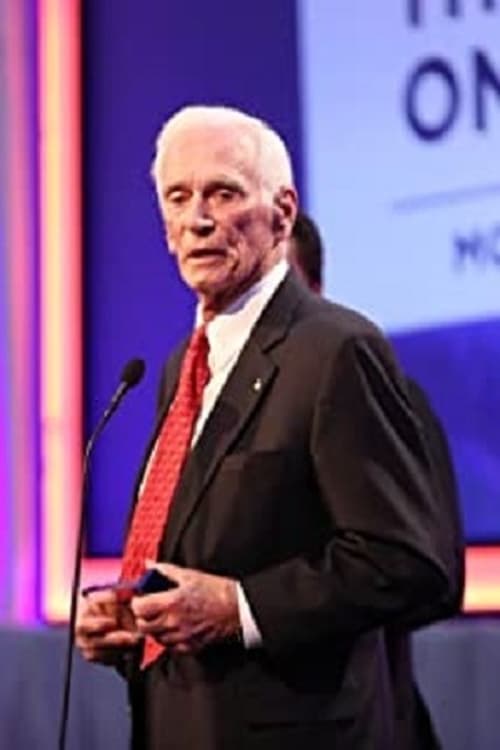Eugene Cernan
Birth : 1934-03-14, Chicago, Illinois, United States
Death : 2017-01-16
History
From Wikipedia, the free encyclopedia.
Eugene Andrew Cernan was an American astronaut, naval aviator, electrical engineer, aeronautical engineer, and fighter pilot. During the Apollo 17 mission, Cernan became the eleventh person to walk on the Moon. Since he re-entered the lunar module after Harrison Schmitt on their third and final lunar excursion, he was the last person to have walked on the Moon.
Cernan traveled into space three times; as pilot of Gemini 9A in June 1966, as lunar module pilot of Apollo 10 in May 1969, and as commander of Apollo 17 in December 1972, the final Apollo lunar landing. Cernan was also a backup crew member of the Gemini 12, Apollo 7 and Apollo 14 space missions.
Description above from the Wikipedia article Eugene Cernan, licensed under CC-BY-SA, full list of contributors on Wikipedia.

A collection of excerpted on-screen interviews with fifteen of the Apollo astronauts.

Self - Astronaut (archive footage)
July 20, 1969. Apollo 11 lands on the surface of the Moon. Such a feat was apparently performed to the greater glory of all mankind, but actually it marked the end of the space race disputed by the two great superpowers of the time in their eagerness to arrive before and the beginning of the spread of the Cold War into space. Nowadays, the struggle continues, but the main competitors and their purposes are others.

Himself
On December 7, 1972, NASA launched Apollo 17, a lunar mission crewed by Eugene Cernan, Ronald Evans and Harrison Schmitt. It would be the last time humans traveled beyond low Earth orbit, the last time man landed on another celestial body, and the last time man went to the moon. The Last Steps uses rare, heart-pounding footage and audio to retrace the record-setting mission.

Himself
The 1960s was an extraordinary time for the United States. Unburdened by post-war reparations, Americans were preoccupied with other developments like NASA, the game-changing space programme that put Neil Armstrong on the moon. Yet it was astronauts like Eugene Cernan who paved the uneven, perilous path to lunar exploration. A test pilot who lived to court danger, he was recruited along with 14 other men in a secretive process that saw them become the closest of friends and adversaries. In this intensely competitive environment, Cernan was one of only three men who was sent twice to the moon, with his second trip also being NASA’s final lunar mission. As he looks back at what he loved and lost during the eight years in Houston, an incomparably eventful life emerges into view. Director Mark Craig crafts a quietly epic biography that combines the rare insight of the surviving former astronauts with archival footage and otherworldly moonscapes.

Himself
Bob Hoover tells his own story and shares, with his trademark charm, the hard earned wisdom of a life spent pushing the edge of the envelope while contributing to aviation’s many developments.

Himself
Archival material from the original NASA film footage – much of it seen for the first time – plus interviews with the surviving astronauts, including Jim Lovell, Dave Scott, John Young, Gene Cernan, Mike Collins, Buzz Aldrin, Alan Bean, Edgar Mitchell, Charlie Duke and Harrison Schmitt.

himself
The Wonder of it All focuses on the human side of the men behind the Apollo missions through candid interviews with seven of the Apollo astronauts: Buzz Aldrin, Alan Bean, Edgar Mitchell, John Young, Charles Duke, Eugene Cernan and Harrison Schmitt. They all reflect on the training, the tragedies, the camaraderie, and the effect that their space travel has had on their families.

Himself
Astronauts Gone Wild: An Investigation Into the Authenticity of the Moon Landings is a 2004 documentary film produced and directed by Bart Winfield Sibrel, a Nashville, Tennessee-based filmmaker who charges that the six Apollo Moon landings in the 1960s and 1970s were elaborate hoaxes. Sibrel made this film as a follow-up to his 2001 video A Funny Thing Happened on the Way to the Moon, which accuses NASA of falsifying the Apollo 11 mission photography. The title of the film is a wordplay on the Girls Gone Wild video series.

Himself
In the mid-1960's, after the success of Project Mercury, the need to master long-duration missions and extravehicular activity resulted in Project Gemini, which provided the seasoning in men and machines that led to the first American spacewalk... and paved the way for ultimate victory in the race to the Moon. This 3-disc set chronicles America's bold new program with comprehensive footage from the film and videotape records of Project Gemini. Includes original Project Gemini documentary, complete 16mm onboard film from all the flights, footage from each mission preparation, launch and recovery. With rare bonus footage of the Gemini spacecraft, Titan launch vehicle, crew training activities and more. Runtime is over 6 hours. NOTE: Some of the tracks do not contain audio.

Narrator - Apollo 10, Apollo 17 (voice)
A testament to NASA's Apollo program of the 1960s and '70s. Composed of actual NASA footage of the missions and astronaut interviews, the documentary offers the viewpoint of the individuals who braved the remarkable journey to the moon and back.

Self (archive footage)
Really strange documentary of Wheeler Dixon production quality on the Tunguska Event and the possibility of it happening again causing an apocalypse (basically a meteor scare film) sprinkled with UFO conspiracy kooks, and other 'professionals', riddled with stock footage of all kinds, freaky moog music and sound fx, a Dr. Who rip-off end theme, Victor Buono as Homer the Archivist, a philosophical history recorder in a space ship with a HAL 9000 type talking computer named Ino, there's also another space ship with Egyptian looking aliens girls with pasties and see-thru blouses.







